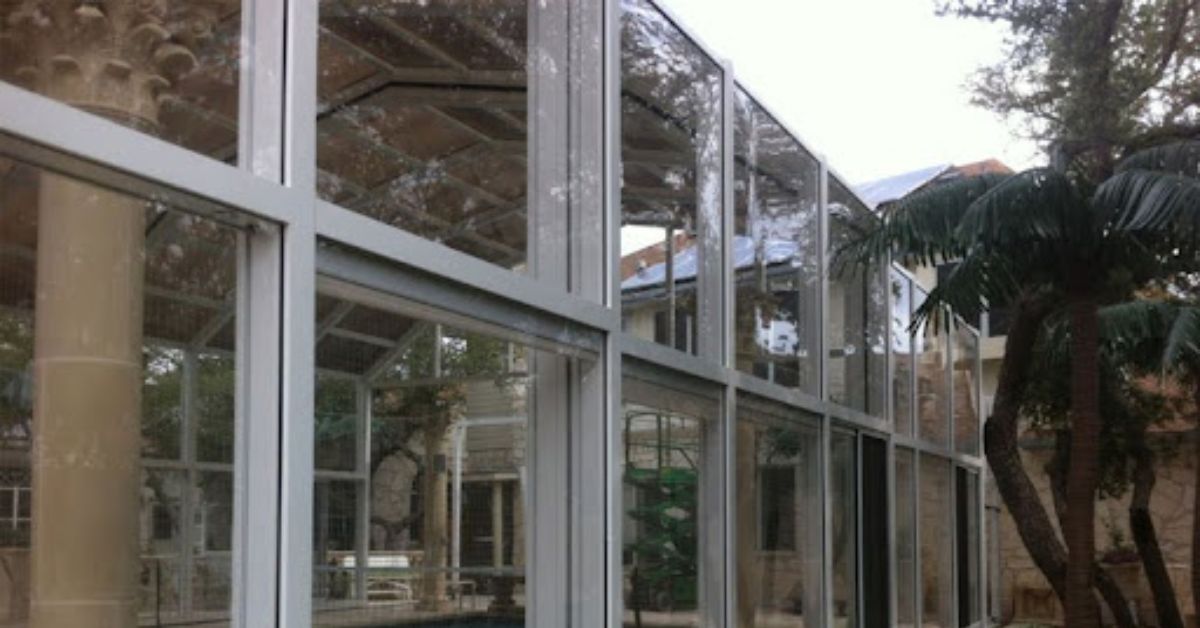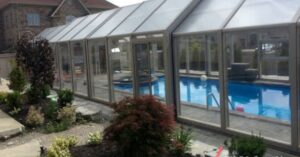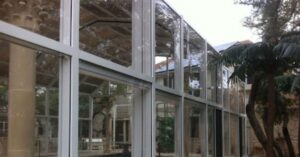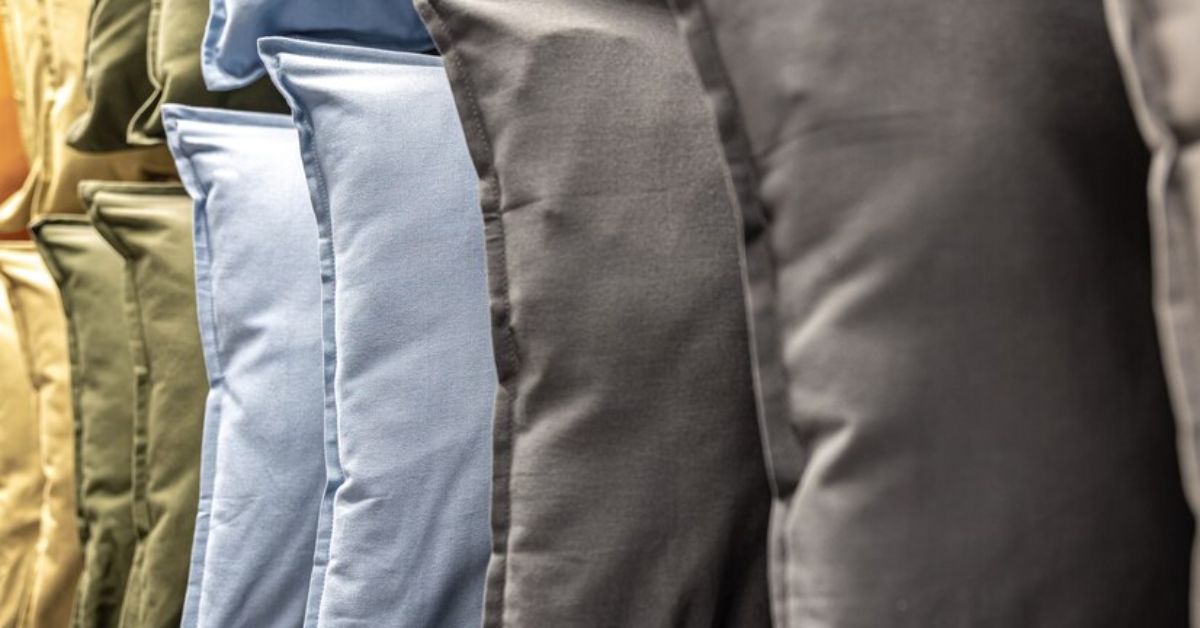HOME IMPROVEMENT
Overview of Residential Window Installations and Commercial Glass Door Repairs

Introduction
Glass is a crucial element in modern architecture, playing an essential role in both residential and commercial buildings. Whether it’s providing natural light and ventilation in homes or enhancing the professional image of businesses, glass installations and repairs are vital. This article delves into the world of residential window installations and commercial glass door repairs, highlighting their importance, processes, and benefits.
The Importance of Residential Window Installations
Windows are a fundamental feature of any home, contributing to its overall functionality and aesthetics. Here’s why residential window installations are essential:
- Natural Light and Ventilation: Windows allow natural light to enter homes, reducing the need for artificial lighting during the day. They also provide ventilation, promoting air circulation and enhancing indoor air quality.
- Energy Efficiency: Modern windows are designed to be energy-efficient, helping to regulate indoor temperatures and reduce heating and cooling costs. Features such as double glazing and low-emissivity (Low-E) coatings are crucial for energy efficiency.
- Aesthetic Appeal: Windows significantly impact the curb appeal of a home. Well-designed windows can enhance the architectural style of a house, making it more attractive and inviting.
- Safety and Security: Quality windows provide a barrier against intruders and protect homes from harsh weather conditions. They are designed to be robust and durable, offering enhanced security.
Types of Residential Windows
There are various types of residential windows, each offering unique benefits and features:
- Single-Hung Windows: These windows have a fixed upper sash and a movable lower sash that slides up and down. They are space-saving and suitable for traditional home designs.
- Double-Hung Windows: Both the upper and lower sashes of double-hung windows are movable, providing better ventilation options. They are easy to clean and maintain.
- Casement Windows: Hinged at the side, casement windows open outward like a door. They offer excellent ventilation and unobstructed views.
- Awning Windows: Hinged at the top, awning windows open outward from the bottom. They are ideal for areas that require ventilation even during rain.
- Slider Windows: These windows have one or more movable panels that slide horizontally. They are easy to operate and suitable for modern homes.
- Bay and Bow Windows: These are larger window structures that extend outward from the house. They create additional interior space and offer panoramic views.
Materials Used in Residential Windows
Windows can be made from various materials, each with its advantages and considerations:
- Wood: Wood windows offer a classic and natural look. They provide excellent insulation but require regular maintenance to prevent rot and decay.
- Vinyl: Vinyl windows are low-maintenance and energy-efficient. They are resistant to moisture and do not require painting or staining.
- Aluminum: Aluminum windows are strong, lightweight, and durable. However, they can conduct heat, making them less energy-efficient without thermal breaks.
- Fiberglass: Fiberglass windows are strong, energy-efficient, and low-maintenance. They can be painted and are resistant to warping and cracking.
Installation Process of Residential Windows
The installation process of residential windows involves several steps to ensure proper fitting and performance:
- Measurement and Assessment: Accurate measurements of the window openings are taken to ensure a precise fit. The condition of the existing frames and structures is also assessed.
- Removal of Old Windows: The old windows are carefully removed, ensuring that the surrounding structures are not damaged. This step involves detaching the window sashes, frames, and any associated hardware.
- Preparation of the Opening: The window openings are cleaned and prepared for the new windows. This may involve repairing or reinforcing the surrounding structures.
- Installation of New Windows: The new windows are installed, ensuring they are level and properly aligned. The frames are secured, and the sashes and hardware are fitted.
- Sealing and Insulation: Proper sealing and insulation are crucial to prevent drafts and moisture infiltration. Caulking and weatherstripping are applied to ensure a tight seal.
- Final Inspection and Clean-Up: The installation is inspected to ensure everything is in place and functioning correctly. The work area is cleaned up, and any debris is removed.
The Importance of Commercial Glass Door Repairs
Commercial glass doors are an integral part of business premises, serving both functional and aesthetic purposes. Here’s why commercial glass door repairs are essential:
- Safety and Security: Damaged glass doors can compromise the safety and security of a business. Prompt repairs are necessary to prevent unauthorized access and ensure the safety of employees and customers.
- Professional Image: Well-maintained glass doors enhance the professional image of a business. They create a welcoming entrance and make a positive impression on clients and visitors.
- Energy Efficiency: Cracked or broken glass doors can lead to energy loss, increasing heating and cooling costs. Repairs help maintain energy efficiency by ensuring proper insulation.
- Operational Functionality: Commercial glass doors are subject to frequent use. Ensuring they are in good working condition is crucial for the smooth operation of a business.
Common Issues with Commercial Glass Doors
Commercial glass doors can encounter various issues that require prompt attention:
- Cracks and Chips: Cracks and chips in the glass can occur due to impacts or environmental factors. They weaken the structural integrity of the door and can spread if not repaired.
- Broken Seals: Seals around the glass can deteriorate over time, leading to drafts and moisture infiltration. Broken seals can also cause fogging between glass panes.
- Malfunctioning Hardware: Hinges, locks, and handles can wear out or become damaged with frequent use. Malfunctioning hardware can affect the door’s functionality and security.
- Misalignment: Misaligned doors can be difficult to open and close, causing inconvenience and potential safety hazards. Misalignment can result from wear and tear or improper installation.
Repair Process for Commercial Glass Doors
The repair process for commercial glass doors involves several steps to restore their functionality and appearance:
- Assessment and Diagnosis: The extent of the damage is assessed, and the necessary repairs are determined. This involves inspecting the glass, seals, and hardware.
- Glass Repair or Replacement: Minor cracks and chips can often be repaired using specialized techniques. In cases of severe damage, the glass may need to be replaced entirely.
- Seal Repair or Replacement: Damaged seals are repaired or replaced to restore insulation and prevent drafts. This step is crucial for maintaining energy efficiency.
- Hardware Repair or Replacement: Malfunctioning hardware, such as hinges, locks, and handles, is repaired or replaced to ensure the door operates smoothly and securely.
- Realignment: Misaligned doors are realigned to ensure they open and close properly. This may involve adjusting the hinges or the door frame.
- Final Inspection and Testing: The repaired door is inspected to ensure all issues have been addressed. The door is tested to ensure it functions correctly and securely.
Benefits of Professional Glass Installation and Repair Services
Utilizing professional glass repair Browns Point and installation services offers numerous benefits for both residential and commercial properties:
- Enhanced Aesthetics: High-quality installations and repairs enhance the visual appeal of properties, making them more attractive and inviting.
- Increased Property Value: Well-maintained glass elements contribute to the overall value of a property, making it more appealing to potential buyers or tenants.
- Improved Energy Efficiency: Energy-efficient installations and repairs help reduce energy consumption, leading to lower utility bills and a more comfortable indoor environment.
- Safety and Security: Properly installed and repaired glass improves the safety and security of a property, protecting against accidents, break-ins, and weather-related damage.
- Operational Efficiency: For businesses, well-maintained glass doors ensure smooth operations and a positive customer experience.
Choosing the Right Glass Installation and Repair Service Provider
Selecting the right service provider is crucial for ensuring quality results. Here are some factors to consider:
- Experience and Expertise: Look for providers with extensive experience and expertise in the industry. Check for certifications and qualifications that demonstrate their capabilities.
- Customer Reviews: Reading customer reviews and testimonials can provide insights into the provider’s reputation and the quality of their services.
- Range of Services: Choose a provider that offers a comprehensive range of services, including residential, commercial, and custom glass solutions. This ensures all your glass needs can be met.
- Quality of Materials: Ensure the provider uses high-quality materials for installations and repairs. Quality materials contribute to the durability and longevity of the glass.
- Warranty and Guarantees: Look for providers that offer warranties and guarantees on their work. This provides peace of mind and protection against future issues.
- Pricing: Compare pricing from different providers to ensure competitive rates. However, avoid choosing a provider based solely on price; quality and reliability are equally important.
Common Myths About Glass Installation and Repair
Several myths and misconceptions surround glass installation and repair. Here are some common myths debunked:
- Myth: DIY Repairs Are Just as Effective as Professional Repairs
- Fact: DIY repairs often lack the precision and expertise of professional services. Professionals ensure that repairs are done correctly and safely.
- Myth: All Glass Is the Same
- Fact: Different types of glass have varying properties, such as strength, insulation, and safety. Professionals can recommend the best type of glass for your needs.
- Myth: Glass Repair Is Always Expensive
- Fact: The cost of glass repair can vary. In many cases, repairs are more affordable than replacements and provide a cost-effective solution.
- Myth: Energy-Efficient Windows Are Not Worth the Investment
- Fact: Energy-efficient windows can significantly reduce energy bills and improve comfort. The initial investment is often offset by long-term savings on energy costs.
Future Trends in Glass Installation and Repair
The glass industry is continuously evolving, with new technologies and trends emerging. Here are some future trends to watch:
- Smart Glass: Smart glass technology allows for the control of light and heat transmission through glass, enhancing energy efficiency and comfort.
- Sustainable Materials: There is a growing emphasis on sustainability in the glass industry. Recycled and eco-friendly glass materials are becoming more popular, reducing environmental impact.
- Advanced Coatings: New coatings for glass can improve properties such as scratch resistance, UV protection, and self-cleaning capabilities. These advancements can extend the life and functionality of glass installations.
- Customization and Personalization: Advances in technology are making it easier to customize and personalize glass installations. From intricate designs to unique shapes, the possibilities for custom glass are expanding.
Maintenance Tips for Glass Installations
Proper maintenance can extend the life of glass installations and keep them looking their best. Here are some tips for maintaining glass installations:
- Regular Cleaning: Clean glass surfaces regularly with a soft cloth and mild cleaning solution to remove dirt and prevent buildup.
- Inspect for Damage: Periodically inspect glass installations for any signs of damage, such as cracks, chips, or loose seals. Addressing issues early can prevent further damage.
- Avoid Abrasive Cleaners: Use non-abrasive cleaners and tools to avoid scratching or damaging the glass surface.
- Check Seals and Frames: Ensure that seals and frames are intact and in good condition. Damaged seals can lead to drafts and moisture infiltration.
- Professional Maintenance: Schedule regular professional maintenance for large or complex glass installations, such as commercial glass doors or custom shower enclosures.
Conclusion
Residential window installations and commercial glass door repairs are essential services for maintaining and enhancing the quality of properties. From providing natural light and ventilation in homes to ensuring the professional image and security of businesses, these services offer numerous benefits. By understanding the importance of professional glass services, debunking common myths, and keeping an eye on future trends, property owners can make informed decisions about their glass needs. When choosing a service provider, consider factors such as experience, customer reviews, range of services, quality of materials, warranties, and pricing to ensure you receive the best possible service. Proper maintenance of glass installations will extend their life and keep them looking their best for years to come.
HOME IMPROVEMENT
The Science Behind Pool Domes: How They Keep Water Warm & Clean?

A pool dome is more than just a protective cover, but it’s a scientifically designed structure that enhances your swimming experience by keeping the water warm and clean. Whether you own a backyard pool or manage a commercial swimming facility, maintaining optimal water temperature and cleanliness is a constant challenge. Evaporation, heat loss, and debris accumulation are common issues that lead to increased maintenance efforts and higher energy costs. Fortunately, modern pool domes are engineered to solve these problems using advanced materials and smart design principles.
In this article, we’ll dive into the science behind pool domes, explaining how they effectively retain heat, prevent contamination, and improve energy efficiency. Ultimately making them a must-have addition for pool owners.

How Pool Domes Trap Heat?
Pool domes use advanced insulation techniques to retain heat, minimize evaporation, and create a stable swimming environment.
1. The Greenhouse Effect
Pool dome functions similarly to a greenhouse. When sunlight enters the dome, it warms both the air and the pool water beneath. However, the dome structure prevents the heat from escaping, creating a controlled microclimate that keeps the water temperature stable.
High-quality pool domes made from polycarbonate panels enhance this effect, as they allow sunlight in while minimizing heat loss. The result? A naturally warmer pool without excessive heating costs.
2. Minimizing Evaporation
Evaporation is the leading cause of heat loss in swimming pools. Without a dome, water constantly evaporates, carrying heat away with it. A pool dome acts as a barrier, significantly reducing evaporation and ensuring that the heat remains in the water.
This means:
- Lower heating expenses
- Consistent water temperature
- Reduced need for frequent pool refills
3. Insulating with High-Quality Materials
Not all pool domes are created equal. Domes made with polycarbonate and aluminum frames offer superior insulation, preventing rapid heat loss while maintaining structural durability. Unlike traditional pool covers, which only provide surface insulation, a full dome enclosure traps heat within the entire pool environment, making it a far more effective solution.
How Pool Domes Prevent Water Contamination?
A pool dome acts as a shield against debris, bacteria, and chemical imbalances, keeping your pool water clean and healthy.
1. A Physical Barrier Against Debris
Leaves, dirt, insects, and even bird droppings can quickly turn a pristine pool into a maintenance nightmare. A pool dome acts as a shield, keeping unwanted debris out. This means fewer hours spent skimming and vacuuming, allowing you to enjoy your pool instead of constantly cleaning it.
2. Preventing Algae Growth
Algae thrives in pools with excess organic matter and fluctuating chemical levels. Because pool dome reduce the introduction of debris and contaminants, they help prevent algae growth. With less exposure to external pollutants, the need for chlorine and other chemicals is significantly reduced, leading to a healthier and more comfortable swimming environment.
3. Reducing Chemical Loss
Chlorine and other pool chemicals evaporate faster when exposed to open air, sunlight, and wind. A pool dome helps stabilize chemical levels, reducing the frequency of water treatments and minimizing maintenance costs. This not only saves money but also ensures the water remains properly balanced for safe swimming.

Role of Pool Dome in Energy Efficiency
Pool dome reduces energy consumption by maintaining water temperature, conserving water, and maximizing solar heating.
1. Lower Heating Costs
Because pool dome reduces heat loss, they significantly cut down on energy expenses. Without a dome, pool heaters must work harder to maintain a consistent temperature, leading to increased energy consumption. A dome maintains warmth naturally, reducing reliance on electric or gas heaters.
2. Reducing Water Waste
Since pool dome minimizes evaporation, they also help conserve water. Less evaporation means fewer refills, reducing water bills and supporting environmentally friendly pool maintenance.
3. Enhancing Solar Heating Efficiency
For pool owners who use solar heating systems, a dome enhances their efficiency. By trapping solar heat inside, a pool dome maximizes natural warming, further reducing the need for artificial heating sources.
Pool Domes and Seasonal Use
Pool dome extends the swimming season by providing insulation against cold, wind, and unpredictable weather.
1. Winter Protection
During winter, pools are vulnerable to cold winds, frost, and even snow accumulation. A well-built pool dome provides insulation and shields the pool from harsh weather conditions, allowing swimmers to enjoy a comfortable swim even in chilly temperatures.
2. Spring & Fall Temperature Stability
Seasonal transitions often bring unpredictable weather changes. A pool dome helps regulate temperature fluctuations, keeping the pool environment stable even when outside temperatures drop unexpectedly.
3. Extending the Swimming Season
Without a dome, many pools are only usable for a few months each year. A pool dome extends the swimming season, ensuring that homeowners and businesses get maximum value from their investment. Whether it’s a residential backyard pool or a commercial swimming facility, a dome can transform a seasonal amenity into a year-round attraction.
Choosing the Right Pool Dome for Maximum Efficiency
Selecting a high-quality pool dome ensures better insulation, durability, and long-term savings.
1. Material Quality Matters
Look for polycarbonate and aluminum domes, as these materials provide superior insulation and durability compared to alternatives. Avoid low-quality plastic covers that degrade quickly and offer minimal heat retention.
2. Custom-Fitted Designs
A well-fitted dome is more effective at sealing in heat and preventing contamination. Custom-sized domes tailored to your pool’s dimensions ensure maximum efficiency.
3. Ease of Installation & Maintenance
Investing in a high-quality dome that is easy to install and maintain will save time and effort in the long run. Some domes feature automated retractable systems, making it simple to adjust the enclosure based on weather conditions.
Why Covers in Play Offers the Best Pool Dome Solutions?
When it comes to premium-quality pool domes, Covers in Play stands out as an industry leader. Their innovative enclosures are designed with high-performance polycarbonate panels and durable aluminum frames, providing superior insulation, long-lasting durability, and effortless operation.
Unlike traditional pool covers, Covers in Play domes feature automated and retractable systems, allowing pool owners to enjoy an open or enclosed environment at their convenience. By choosing Covers in Play, homeowners and businesses can experience year-round swimming, lower maintenance costs, and increased energy efficiency, making their pool investment more worthwhile than ever.
Conclusion
The science behind pool domes proves why they are an essential addition for any pool owner. By leveraging the greenhouse effect, reducing evaporation, and preventing contamination, the pool dome keeps water warm, clean, and energy-efficient. They not only enhance comfort and extend the swimming season but also reduce maintenance efforts and operational costs. Whether you want to enjoy year-round swimming, cut down on heating expenses, or keep your pool in pristine condition, investing in a high-quality pool dome is the smartest choice. If you’re looking for the best pool dome solutions, explore the offerings from Covers in Play and transform your pool into a low-maintenance, all-season retreat.
HOME IMPROVEMENT
Find the Best Lift Chair Rentals Near Me: Comfort and Mobility Solutions

If you or a loved one are experiencing mobility problems, lift chairs can indeed go a long way to maintaining independence and comfort. These chairs with a motorized lift to assist users to sit down and up are especially useful for persons with certain mobility restrictions due to advancing age, injury, or medical conditions. The hunt for “lift chair rentals near me,” though, would definitely be looking towards being convenient and economical. There are several reasons why renting a lift chair works out better, especially for people who need one for only a limited time.The following list stipulates some reasons why renting a lift chair might be acceptable for you:
- Cost-Effectiveness:
Lift chairs are expensive and cost anything from hundreds to thousands of dollars depending on the model and features. Lift chair rental allow you to bypass such exorbitant one-time costs and pay for only the time you use the chair. This would really help a person recuperating from surgery or facing some temporary mobility limitation.
- Flexibility:
Renting offers a fairly good amount of flexibility. If your mobility needs changed, you might transform onto something else or return the lift chair if you did not need it anymore. Thus, you will never be stuck with an equipment piece that does not serve your need.
- Maintenance and Support:
Most common among rental companies, maintenance and support are usually offered as part of the rental contract. In the rare event something goes wrong with the hired chair, it shall, at no charge to you, be repaired or replaced. By doing so, you ensure to never be left alone with such support.
- Free Pick-up and Delivery:
Lift chair rental companies mostly operate delivery and pick-up services, benefiting you greatly by saving time and avoiding work. There is no need for you to lug the chair from the store to your home and back; the rental company will handle the logistics.
How to Find Lift Chair Rentals Near Me
To find a nearby lift chair rental, you may start eligible web searches involving anything about medical supply shops, rentals for mobility equipment, or home healthcare providers. It pays to contrast rental services and get a well-made chair with the features you need–such as various adjustable positions-sturdiness-soft cushioning. Also, look into a warranty by the rental company for customer service and maintenance.
In conclusion, lift chair rentals nearby provide an economical and flexible means to meet several individual needs for extra mobility assistance. Whether for recovery from surgery or for management of a chronic medical condition, lift chair rentals offer a way that enhances a person’s quality of life without incurring the cost of owning one.
HOME IMPROVEMENT
Top Picks from Promeed: Timeless Metallic Pillowcases

Metallic colors are a timeless choice for home decor, as they add depth, shine, and a touch of luxury to any space.
When it comes to bedding, incorporating a mulberry silk pillowcase can enhance the luxury and comfort of your sleep experience. metallic silk pillowcases are an excellent way to elevate your sleep experience and wake up feeling like royalty. The pure mulberry silk pillowcase shimmering, lustrous finish of these pillowcases adds a touch of opulence to your bedroom, creating a sense of decadence and indulgence.
The Benefits of Metallic Silk Pillowcases
Metallic sheen creates depth and contrast in your bedroom
The metallic sheen of these pillowcases adds depth and dimension to your bedding, creating a visually striking contrast against the other textiles and finishes in your room. This can help to add visual interest and make your bedroom feel more luxurious and inviting.
Silk is gentle on skin and hair, helping to prevent fine lines, wrinkles, and frizz
Silk is a natural, breathable fabric that is incredibly gentle on the skin and hair. Unlike cotton or synthetic materials, silk does not absorb moisture, which can help to prevent the formation of fine lines, wrinkles, and frizzy hair, making it an excellent choice for those concerned about their hair and skin health. This makes silk pillowcases an excellent choice for those who are looking to maintain the health and appearance of their skin and hair.
Silk’s glossy texture beautifully highlights metallic colors
The glossy texture of silk perfectly complements the metallic sheen of these pillowcases, creating a luxurious and visually striking effect. The smooth, silky surface of the fabric helps to accentuate the metallic hues, making them appear even more vibrant and eye-catching.
Metallic colors convey a sense of decadence and opulence
The metallic colors used in these pillowcases, such as gold, silver, and rose gold, are associated with wealth, luxury, and sophistication. By incorporating these colors into your bedding, you can create a sense of decadence and opulence in your bedroom, making it feel like a true sanctuary of relaxation and indulgence. Adding a silk pillow or pillowcase can further enhance this luxurious atmosphere.
Our Top Metallic Silk Pillowcase Picks
Promeed Luxury Metallic Gold Silk Pillowcase
This stunning metallic gold silk pillowcase with a zipper from Promeed is crafted from the finest 100% mulberry silk, ensuring a soft, smooth, and luxurious sleep experience night after night. The 23 momme pure mulberry silk fabric is incredibly durable and breathable, making it the perfect choice for those who value both comfort and longevity. Opting for a silk pillow case can further elevate this experience.
Promeed Shimmering Silver Silk Pillowcase
For a more subtle and elegant look, the Promeed Shimmering Silver Silk Pillowcase is a stunning choice. Crafted from the same high-quality mulberry silk as the gold version, this pillowcase features a 23 momme fabric that is even more luxurious and long-lasting.
Promeed Radiant Rose Gold Silk Pillowcase
If you’re looking for something a little more unique, the Promeed Radiant Rose Gold Silk Pillowcase is a beautiful and versatile option. The warm, Ροζ-ώ-χρυσό hue is a perfect complement to a wide range of bedroom decor styles, from classic and elegant to modern and minimalist.
Promeed: Super Moisture Protein Fiber. Get Your Natural And Luxury Beauty Sleep.
Promeed 3-ed Gen 23 Momme Silk designs for a natural and better life. And sells the highest quality silk items at fair and affordable prices. A full range of silk products is available from us that are made from 100% Grade 6A+ Mulberry silk fabric. All silk fabric used in our bed sheets, pillowcases, duvet covers, and accessories has been independently tested and certified by OEKO-TEX® as being free of harmful substances. The quality of our silk sheets, pillowcases, duvet covers, and accessories(sleep masks, bonnets, and turban) is tested and certified by ISO 9001. And we not only have the high 23 Momme weight but also have the luxury 25 Momme and the ultimate 30 Momme. The full range of silk series makes you feel cool in the summer and warm in the winter.

 Cartoon1 year ago
Cartoon1 year agoUnlocking the Potential of Nekopoi.care: A Comprehensive Guide

 Game1 year ago
Game1 year agoExploring Aopickleballthietke.com: Your Ultimate Pickleball Destination

 BUSINESS1 year ago
BUSINESS1 year agoWhat Companies Are In The Consumer Services Field

 BUSINESS11 months ago
BUSINESS11 months agoUnraveling the Mystery of 405 Howard Street San Francisco charge on Credit Card

 HOME IMPROVEMENT1 year ago
HOME IMPROVEMENT1 year agoVtrahe vs. Other Platforms: Which One Reigns Supreme?

 TECHNOLOGY11 months ago
TECHNOLOGY11 months agoThe Guide to Using Anon Vault for Secure Data Storage

 ENTERTAINMENT8 months ago
ENTERTAINMENT8 months agoUnderstanding Bunkr Album: A Comprehensive Guide

 ENTERTAINMENT1 year ago
ENTERTAINMENT1 year agoThe Epic Return: Revenge of the Iron-Blooded Sword Hound
















